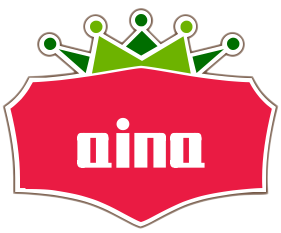Hyperwave is a distributed computing grid platform where community members contribute their computing power to earn credits.
These credits can then be spent to accelerate the processing of their own projects.
The platform enables hyper-scaled computation by dividing large, complex tasks into smaller parts that are distributed across many computers working in parallel, significantly reducing the time needed to complete tasks like video transcoding, animation rendering, or AI model training.
What is Hyperwave?
Hyperwave is a decentralized distributed computing platform powered by a community-driven network of participants who contribute processing power in exchange for credits.
It enables hyper-scaled computing by breaking complex computational tasks into smaller parts, distributing them across many computers, and reassembling results swiftly.
This model significantly accelerates processes such as video transcoding, animation rendering, and AI model training that would otherwise take hours on a single computer.
Unlike relying on centralized data centers or cloud providers, Hyperwave taps into the idle computing resources of everyday users, providing a flexible, scalable, and cost-effective infrastructure.
Users earn credits by sharing their computer power, which they can later spend to prioritize acceleration of their own projects.
The workloads are containerized for security, ensuring no untrusted code can harm user systems.
Users can customize what types of tasks their systems handle, maximizing credit earnings by supporting multiple workload types.
How Does Hyperwave Work?
Hyperwave operates as a distributed grid where the network intelligently splits tasks leveraging common compute patterns.
Community-contributed resources execute smaller task components in parallel, greatly reducing the total processing time.
The system uses containerization to securely isolate tasks, protecting both user computers and the task workloads.
Users control their participation settings, including which tasks to process.
A community-sourced library of compute patterns grows over time via open-source contributions, initially developed by Team Hyperwave.
Users not wishing to contribute computing power can also purchase credits directly to access accelerated processing.
This model enables a wide range of applications, from video processing to advanced AI model training, bringing supercomputer-level power to ordinary users.
Hyperwave Airdrop Details
Hyperwave is launching an airdrop campaign to distribute its governance token $HWAVE via a Wave Points rewards program incentivizing ecosystem participation.
-
Token: $HWAVE
-
Allocation: 16% of total supply (recently increased from 8%)
-
Program end date: August 28, 2025 (Season 1), with Season 2 ongoing
-
Points earnings:
-
Holding hwHLP tokens: 1 point per token per day
-
Depositing into hwHYPE vault: 50 points per token per day
-
Multipliers available by engaging with partnered protocols (e.g., Pendle, Hypurr)
-
Referral bonuses: 5% permanent boost
-
Early depositors earn extra allocations
-
$HWAVE tokens empower governance and incentivize liquidity and lending activities on the Hyperliquid ecosystem built on the HyperEVM blockchain.
Step-by-Step Guide: How to Participate in the Hyperwave Airdrop
-
Connect Wallet
-
Visit the official Hyperwave app
-
Connect an EVM-compatible wallet like MetaMask or WalletConnect
-
Ensure the wallet network is set to HyperEVM
-
-
Obtain Required Tokens
-
Acquire USDT0 or USDe stablecoins for hwHLP deposits
-
Acquire HYPE tokens for hwHYPE vault deposits
-
Tokens can be bridged via Hyperflow or LayerZero cross-chain bridges
-
-
Use Referral Code
-
Enter referral code AIRDROPSIO to get a 5% Wave Points bonus
-
-
Deposit into Vaults
-
Mint hwHLP tokens by depositing USDT0 or USDe to earn 1 Wave Point per token per day
-
Deposit HYPE tokens into hwHYPE vault to earn 50 Wave Points per token per day and qualify for early participant bonuses
-
-
Maximize Rewards
-
Use hwHLP tokens in Pendle markets for 2x-2.5x multipliers
-
Provide liquidity in supported DEX pools
-
Borrow on Hypurr or Hyperdrive to boost points
-
Hold Pendle yield tokens for extra rewards
-
-
Track Progress
-
Monitor points balance and rankings in the Hyperwave app portfolio dashboard
-
Frequently Asked Questions (FAQ)
Q: What is the main benefit of using Hyperwave?
A: Hyperwave provides access to highly accelerated distributed computing power by pooling idle resources, cutting down task completion times drastically compared to single machines.
Q: Is participating in Hyperwave safe for my computer?
A: Yes, Hyperwave uses containerization, isolating distributed tasks to prevent interference with your system.
Q: Can I earn rewards without contributing computing power?
A: Yes, users can buy credits or participate in the airdrop by depositing tokens into Hyperwave vaults.
Q: What is hwHLP?
A: hwHLP is a yield-bearing, liquid token representing exposure to Hyperliquid’s Hyperliquidity Provider vault, facilitating access to DeFi yield strategies.
Q: Which wallets are compatible with Hyperwave?
A: EVM-compatible wallets such as MetaMask and WalletConnect are supported.
Q: When does the airdrop end?
A: Season 1 ended August 28, 2025. Season 2 is currently live with continuing opportunities.
Conclusion
Hyperwave represents a convergence of decentralized compute infrastructure and DeFi incentives, empowering users to accelerate their projects while participating in token governance and rewards.
This innovative Web3 project combines distributed computing, token economics, and community participation to create a powerful ecosystem leveraging the HyperEVM blockchain.
Hyperwave uses containerization to ensure tasks run securely without accessing user computers or vice versa.
Users have control over which tasks their computers perform, and they can choose to maximize credit earnings by supporting various workload types.
The platform supports community contributions to its library of compute patterns through an open-source model, expanding the types of workloads it can efficiently handle.
Besides users who contribute computing resources, Hyperwave also allows others to purchase credits directly to accelerate their projects.
Overall, Hyperwave offers a community-powered, scalable alternative to traditional centralized cloud computing infrastructures, enabling ordinary users to access supercomputer-level processing power with security and flexibility.

